It is the last day of National Tree Week, but there is never a bad time to plant a tree.
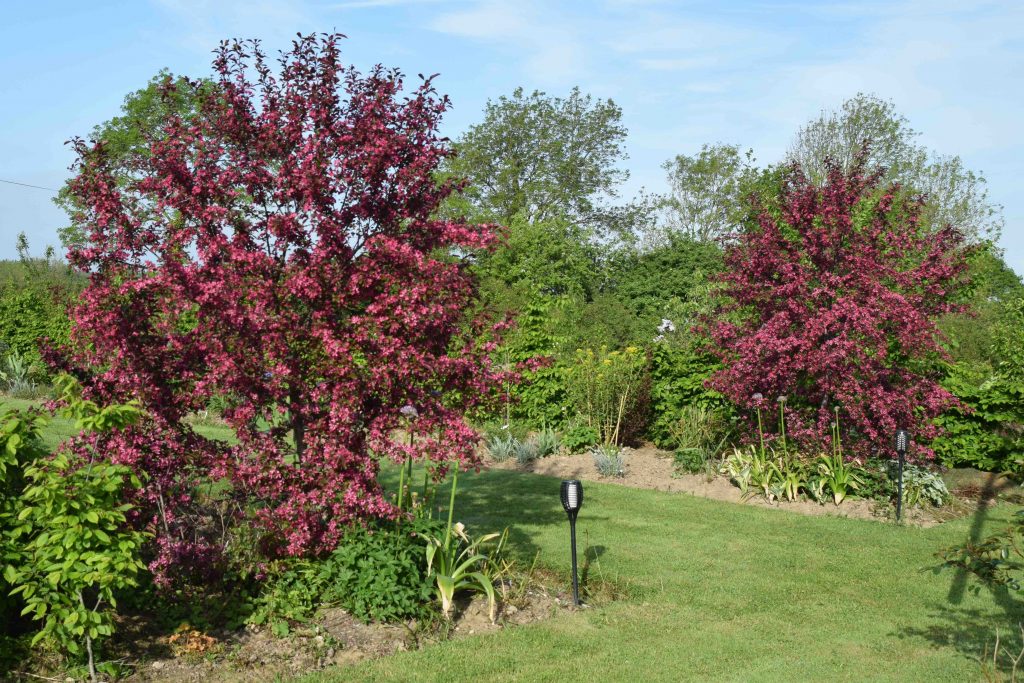
But there are definitely ‘better’ times. The best time is definitely autumn, which is why it is National Tree Week now. Autumn is a good time because the soil is usually still relatively warm and moist and it gives the tree all winter to settle in, and the soil to work its way around the roots, before growth starts in spring. It is another strange year and the soil is very wet for most of us.
Autumn is also the start of the ‘bare-root‘ season. We don’t plant many bare-root trees nowadays, apart from fruit. Bare-root trees are dug up as the trees become dormant so they survive what is pretty rough handling. But pot-grown trees, which can be planted all year, are best planted now too because you can tease out the roots to help establishment without harming the tree.
Trees are a long-term commitment and you need to think carefully about what you choose and where you plant them. It is tempting to pick up a conker or an acorn and plant a native tree for wildlife (though conkers – Aesculus hippocastanum – are not native trees) but most gardens are too small for forest trees. It is better to choose a smaller tree and there is no reason why these won’t be beneficial to birds, insects and other wildlife.
My own garden was a field five years ago and, as the hedges and trees have grown, it is remarkable how many birds have moved in. I am fortunate to have an old, wild hedge on one side and I have planted native hedges round the other three sides but not all my tree planting has been of native plants and all have some benefit to wildlife.
We need to consider the look of trees in the landscape. It is tempting to choose trees with variegated, purple or golden foliage but these don’t always look right in a rural setting. In my own garden, I only have purple trees in the centre of the garden and my peripheral trees and hedges are native or ‘natural-looking’. In a town garden, anything goes! Beware of variegated trees such as ‘Drummond’s maple’, the most popular of variegated trees. It will revert and produce all-green stems and these are impossible to remove from a mature tree.
Firstly, a few basics. Most trees will grow best in a sunny spot and few will tolerate waterlogged soil (try alnus or metasequoia). If planting in grass, always keep the grass away from the base of the trunk – it will compete with the young tree for watering nutrients and the trunk will get damaged when mowing. The planting hole need not be deeper than 30cm and should be at least 45cm wide. The fashion these days is for a square hole! Mix in plenty of organic matter, deep in the hole and with the excavated soil.
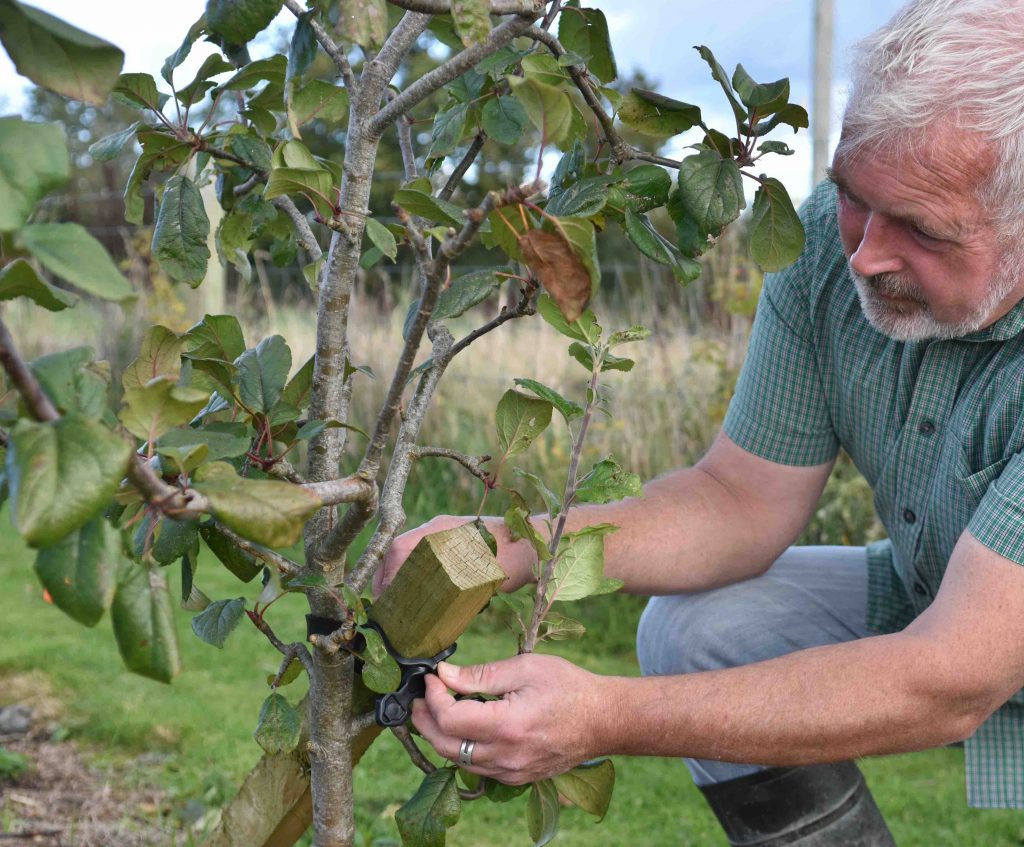
It is not necessary, nor desirable, to stake the tree up to its neck! The stake should be to hold the roots steady so they can grow into the surrounding soil. If the trunk flexes, it helps it to thicken and strengthen. You can bang the stake into the soil at a 45% angle, so the stake does not damage the rootball, and use a tree tie to attach it securely. Avoid using wire, which will cut into the bark.
And so we come to choice: Taking my own tree choices into account, I can’t but start with birches (betula). These were the first trees I planted for various reasons – they generally tolerate poor, acid and rather wet soils, they grow quite quickly but none are too huge, they put up with cold gardens and they are attractive all year round. Admittedly they do not have showy flowers but their foliage is delicate and their bark is often exquisite. Of course I planted some with bright white bark (Betula utilis) but also some with pink and buff bark (Betula albosinensis). I also had to have some with darker, peeling bark, including ‘Wakehurst Chocolate’ and the beautiful river birch (Betula nigra). All have their own charm.
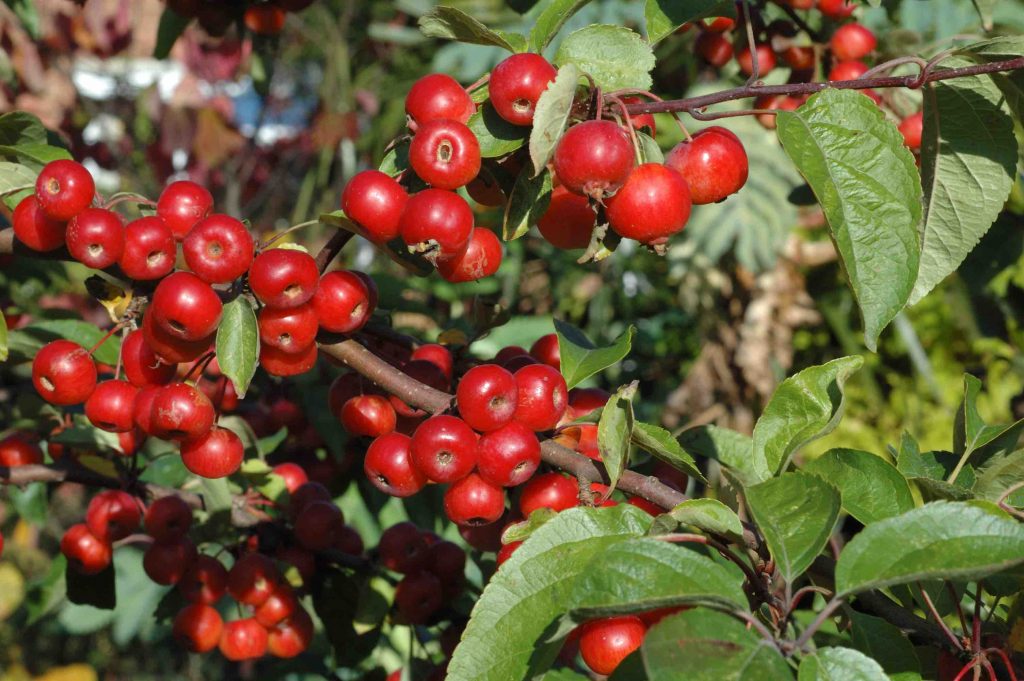
But the classic garden trees are crab apples (malus). They have lots of good qualities. They tolerate clay soils, never get too big, flowers profusely, attracting bees, and have fruits that feed the birds. Even better, they will cross-pollinate your apple trees effectively. My ‘Gorgeous’ crab apples make a lovely pink crab apple jelly, though the birds don’t seem to relish the fruits. But my pair of ‘Freya’ trees (top photo), which produce tiny, cherry-like fruits, are a big hit with the birds. ‘Freya’ is a form of Malus toringo and there are others, all superb small trees, usually with red foliage.
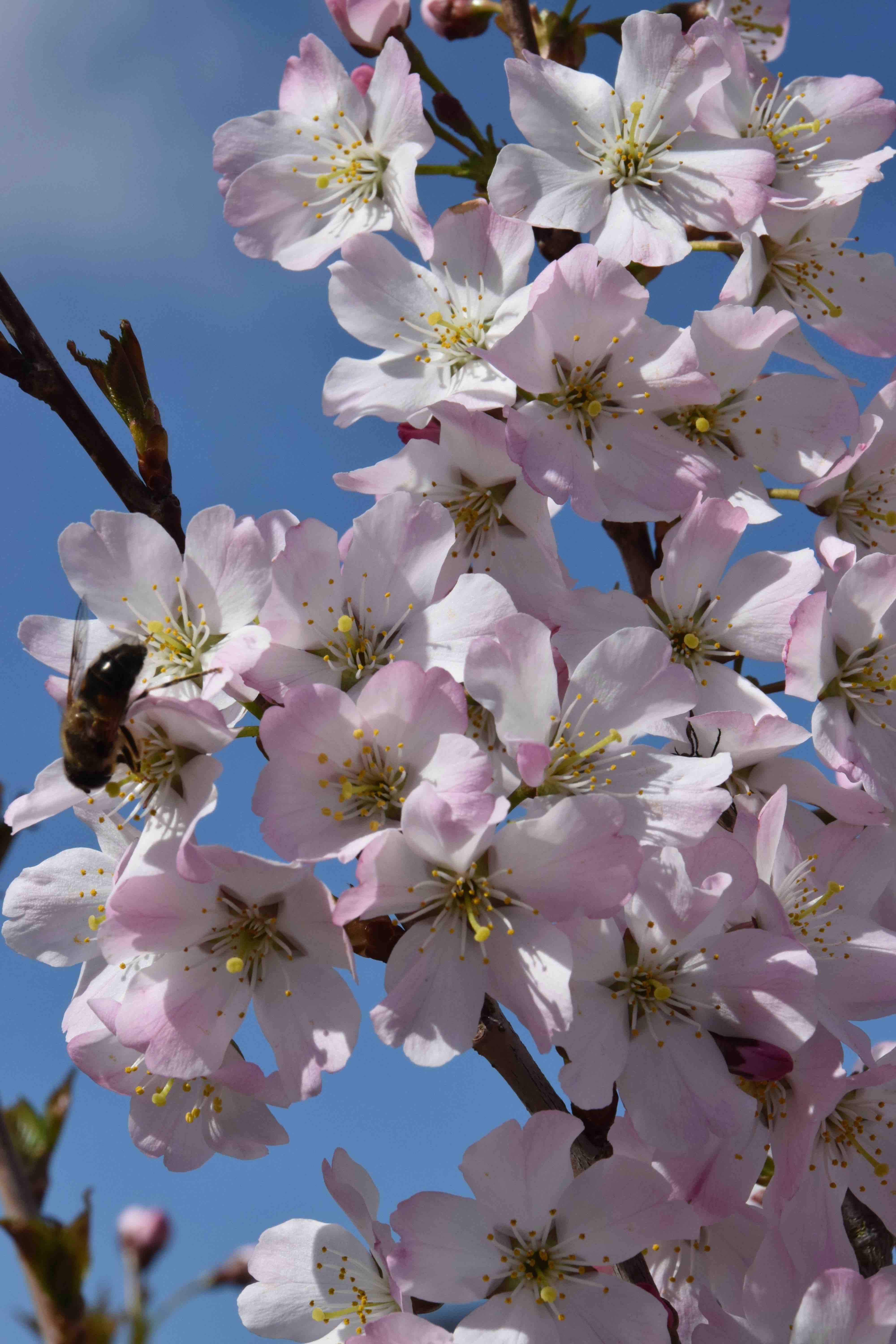
Cherries (prunus) are popular garden trees and can be beautiful in bloom. The flowers don’t last long but their brief display is a total joy. When I started gardening, the most popular cherry was ‘Kanzan’ in deep raspberry pink. It fell from fashion because it was so common but it is time for a revival. ‘Royal Burgundy’ is more popular now but is simply a mutation of ‘Kanzan’ with deep purple leaves. Cherries are a good choice for well-drained soil and will grow on chalk. But they have surface roots which will lift paving and grow through lawns, often suckering, so place them carefully.
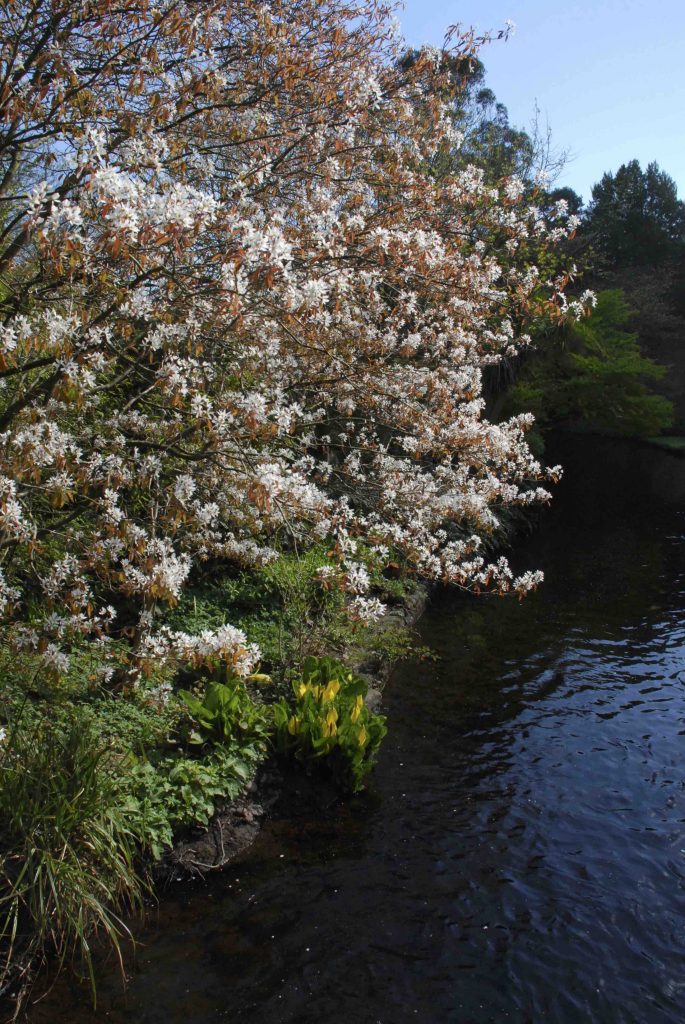
A tree that is always at the top of lists of trees for small gardens are the amelanchiers. They are twiggy, elegant and do not cast much shade, ticking a lot of boxes. They have delicate, white flowers in spring, often as the bronze foliage is expanding, and autumn colour can be breathtaking. But it has to be said that both seasons of beauty are brief! Even so, I would hate to be without one.
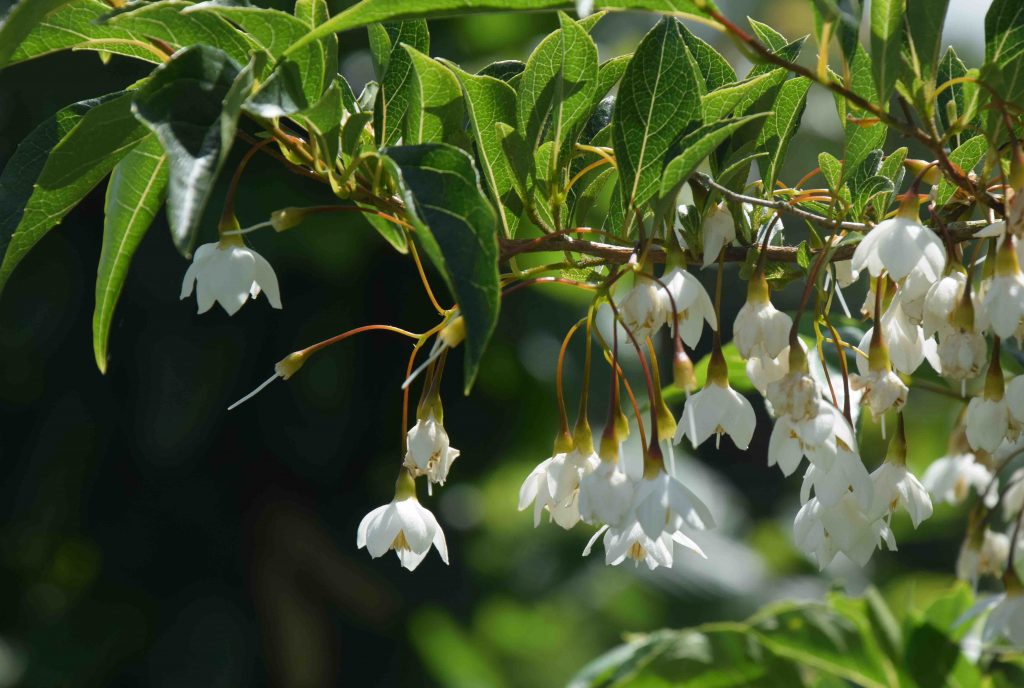
An unusual, but very beautiful choice, is Styrax japonica. You don’t see these often so when Knights have them in stock, snap them up. It is a rather slow grower, developing rather spreading branches and a low, vase shape at maturity. The moment of glory comes in June when the delicate, faintly fragrant, white flowers drip from the spreading branches. It needs acid or neutral soil, ideally in full sun. Mine has grown slowly but flowers when young and I can’t wait till it grows bigger.
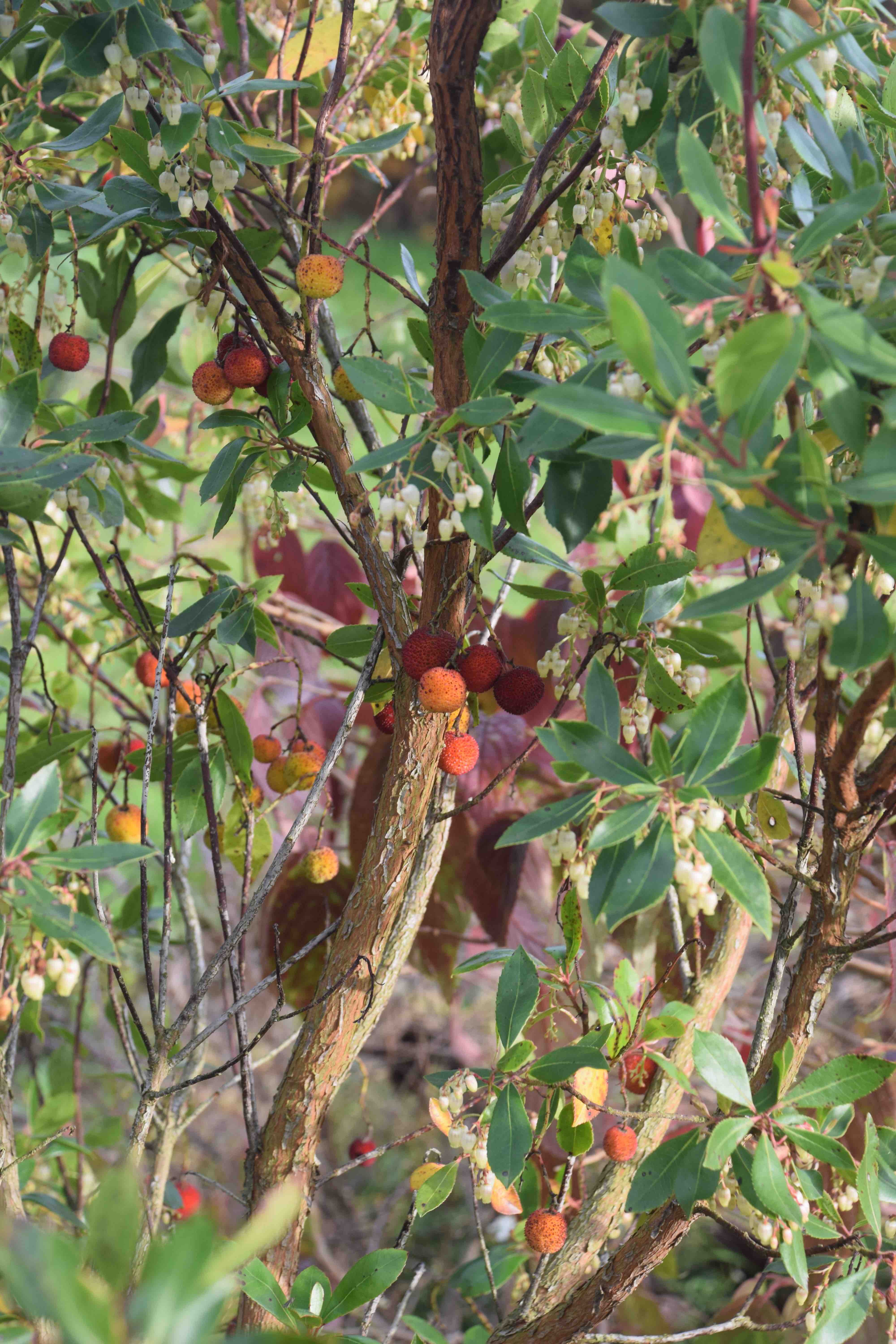
There are lots more, of course, and hawthorns (crataegus) include some fine, tough choices. My favourite of all trees is Acer griseum, the cinnamon-coloured paperbark maple. It is a superb small tree, though slow to grow at first. I planted one when I was a teenager, in my parents garden in Oxted, on thick clay over chalk and it did vey well.
There are not many pretty, small, evergreen trees but the strawberry tree (Arbutus unedo) is among the best. It is usually sold as a small shrub but eventually makes a multi stemmed, distinctive, pretty tree. It blooms in October, with ivory, nodding blooms that provide a useful late feed for bees. The berries, from the previous year’s flowers, ripen at the same time. My tree started as a 30cm twig five years ago and is now 2m (6ft) high and has started to flower and fruit quite well, despite being in a rather exposed spot. It tolerates most soil types, both acid and alkaline. It is one of the plants I go to every time I wander round the garden – there is always something happening, and that is what we need in our gardens.